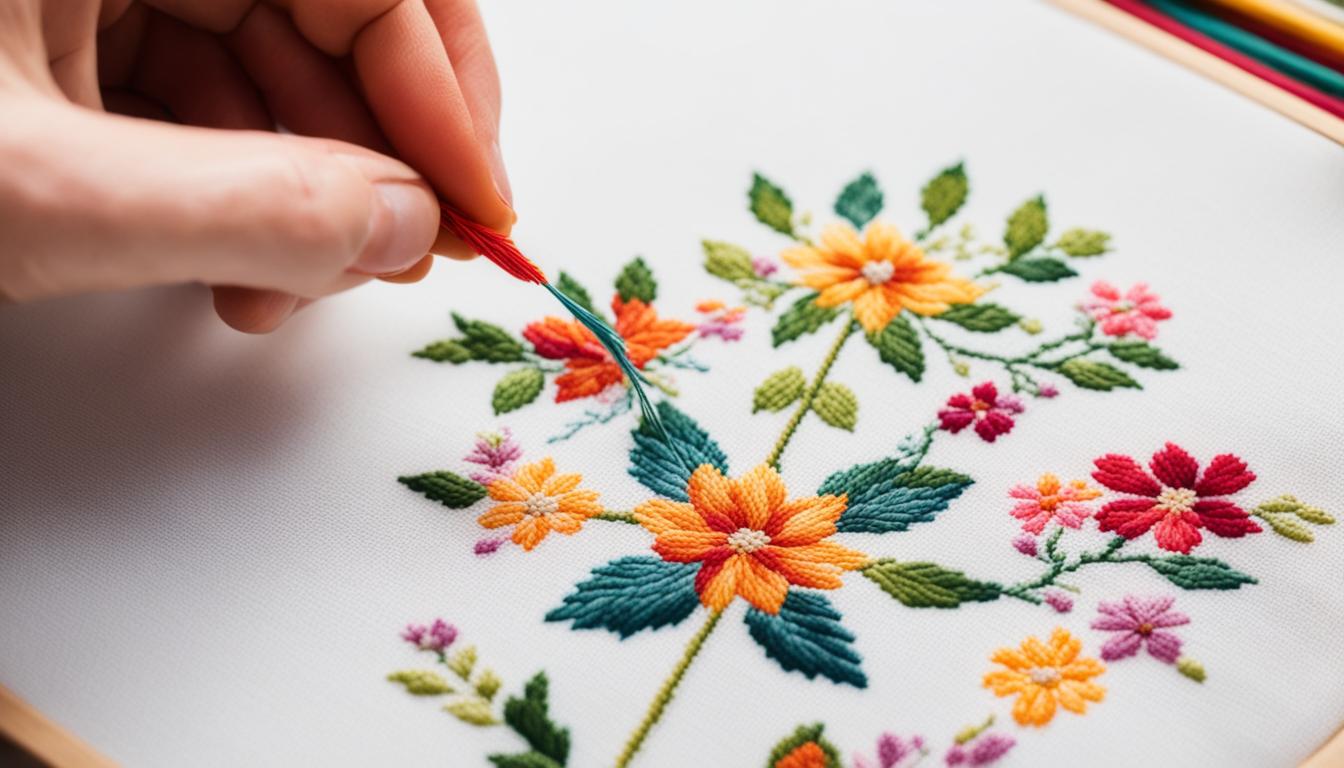Choosing between crossstitching and embroidery depends on what you like. Cross stitch is great for those who love detailed patterns and a structured way of working. It’s also easy to start with, thanks to cross stitch tutorials that help you create stunning crossstitching designs.
Embroidery, on the other hand, lets you be more creative and try out different techniques. It’s perfect for those who enjoy artistic freedom. You can use various stitches like backstitch, French knots, and satin stitch to decorate your fabric.
For beginners, crossstitching might be easier. But if you’re up for a challenge, embroidery offers more complex techniques and designs to explore.
Key Takeaways
- If you prefer structured patterns, crossstitching is a great start.
- Cross stitch is ideal for beginners due to simpler, repetitive patterns.
- Embroidery provides more artistic freedom and technique variety.
- Common fabrics: aida for crossstitching, and linen or cotton for embroidery.
- Tools: Embroidery needles have pointed ends, cross stitch needles have blunt ends.
- DMC Stranded Cotton threads are suitable for both crafts.
- Elbesee hoops help keep fabric taut during stitching.
Understanding Cross Stitch and Embroidery
Cross stitch and embroidery are popular in needlework, each with its own unique techniques and uses. This section will explore these art forms, highlighting their distinct qualities.
What is Cross Stitch?
Cross stitch is a counted needlework method that uses X-shaped stitches on fabrics like Aida cloth. It starts with charts that guide you through different threads on a grid. You’ll need crossstitching needles, which are blunt-tipped, perfect for aida fabric.
Cross stitch embroidery includes full and half cross stitches, backstitch, and French knots. These techniques create designs from simple to complex.
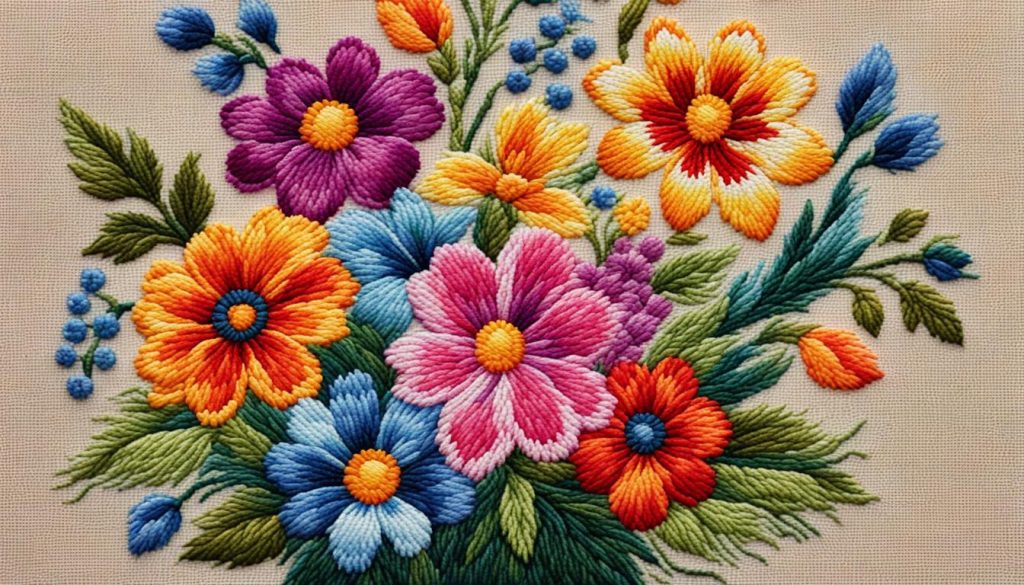
DMC offers high-quality stranded cotton threads for these projects. Beginners can start with crossstitching kits. These kits come with pre-sorted threads, fabric, and charts, making it easier to begin.
What is Embroidery?
Embroidery is versatile and free-form, unlike crossstitching. It doesn’t follow a fixed grid, allowing for creativity on various fabrics like Kona Cotton Solids. Techniques include satin stitch, chain stitch, and French knots, leading to fluid and painterly designs.
Embroidery needles have sharp points, great for piercing through different materials. It can even be done on wood and metal. Hand embroidery lets you express your style with various stitches and threads. Brands like Elbesee hoops help keep your fabric taut for precise stitching.
Both crossstitching and embroidery can be used to make items like clothing, home decor, and more. Cross stitch follows a pattern, while embroidery encourages creativity and artistic expression.
Techniques: Cross Stitch vs Embroidery
When you dive into needlecraft, you’ll see big differences between crossstitching and embroidery. Each has its own way of creating art, fitting different skills and creative goals. Let’s look at what makes these two methods special.
Cross Stitch Techniques
Cross stitch uses small X-shaped stitches to make pixelated images. It’s done on aida cloth, which has a grid perfect for beginners.
- Basic Stitches: Cross stitch mainly uses one stitch type, making it easy to learn and do.
- Materials: You need specific supplies like aida cloth and tapestry needles for crossstitching.
- Patterns: Cross stitch patterns are uniform and grid-based, great for beginners.
Because of its simple patterns, crossstitching is easy to start with. You can find many patterns in “The World of Cross Stitching” magazine, from easy to hard.
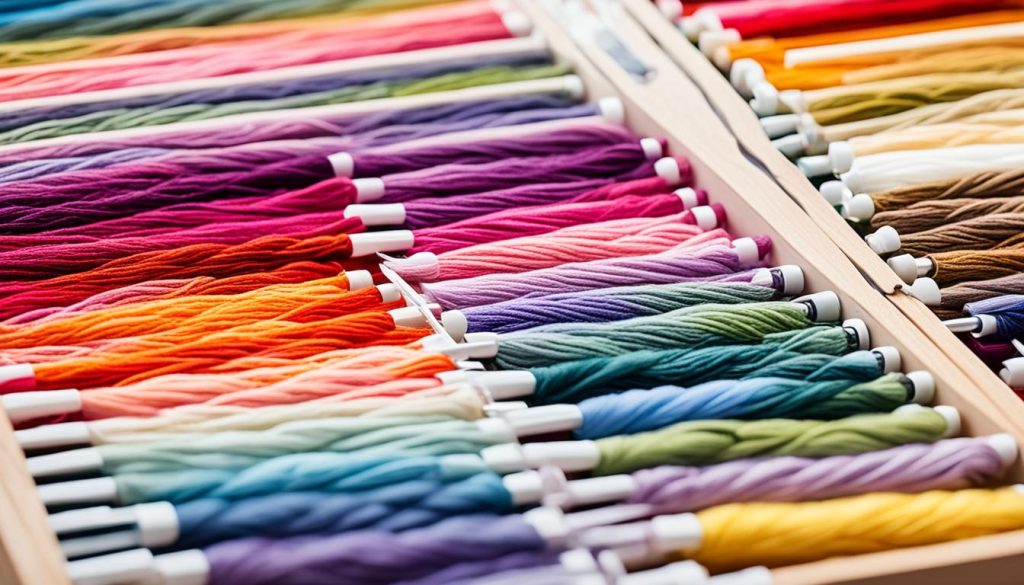
Embroidery Techniques
Embroidery is more flexible and varied. It uses different stitches and can be on various fabrics, like cotton. This gives a wide range of textures and looks.
- Diverse Stitches: Embroidery uses stitches like satin stitch and French knots.
- Materials: You can use many fabrics for embroidery, from cotton to others.
- Design Flexibility: Embroidery lets beginners and experts make unique designs. “Love Embroidery Magazine” has designs for all levels.
Embroidery needs detail and lets you be creative. It’s great for making unique fabric art.
| Attribute | Cross Stitch | Embroidery |
|---|---|---|
| Primary Stitch | Single X-shaped stitch | Various stitches (e.g., satin stitch, French knots) |
| Fabric | Aida cloth | Diverse fabrics (e.g., cotton) |
| Needle Type | Tapestry needle | Sharp needle |
| Pattern Style | Grid-based | Free-form or grid-based |
| Skill Level | Beginner-friendly | Varies; suitable for all levels |
Choosing crossstitching or embroidery depends on what you like. Both offer unique ways to explore needlecraft.
Time and Effort Required
Cross stitch is great for beginners because it has countable patterns. This makes it easier to finish projects. Embroidery, on the other hand, takes a lot of time and effort because it’s free-form. Knowing how much time and effort each craft needs helps you choose which one fits your schedule and interests.
Time Investment in Cross Stitch
Cross stitch projects can take a few hours or several months to finish, depending on the design’s complexity and size. For example, “Moon Lit Waters” can cost around $10,180 or up to $15,000 with special materials and patterns. The time it takes to complete a crossstitching project depends on the design’s complexity and size.
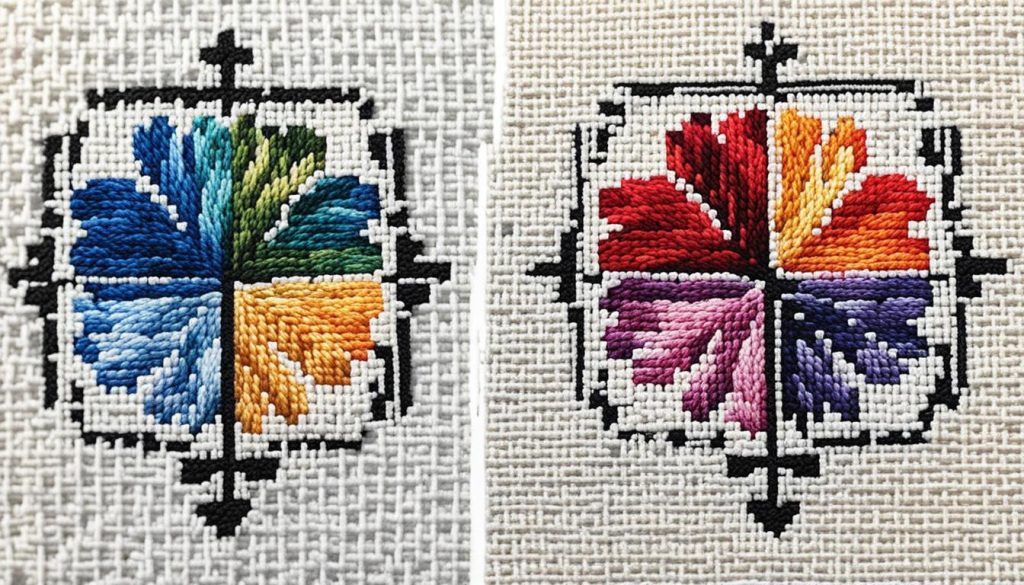
To figure out the total cost of a crossstitching project, consider materials, hourly rate, and time spent on it. The hourly rate should match the skill level needed for complex designs. A good way to price a project is:
| Cost Component | Details |
|---|---|
| Materials | Specialty threads, fabric, beads |
| Hourly Rate | Based on average stitch speed |
| Time Taken | Calculated in hours |
This method gives a clear picture of the time and effort put into each project.
Effort Required for Embroidery
Embroidery needs a lot of time and skill because it’s free-form. Unlike crossstitching, which follows a grid, embroidery requires the artist’s eye and hand coordination for complex designs. This makes it take longer and requires more skill.
Using embroidery techniques like satin stitches, French knots, and shading can turn a simple design into a masterpiece. This not only increases the time but also the effort needed to learn these techniques. Many embroiderers work hard to practice and improve their skills for better results.
Understanding the time and effort needed for crossstitching and embroidery helps you choose the right craft for your lifestyle and creative goals.
Exploring Practical Applications
Cross stitch and embroidery offer many uses for personal and decorative needs. Cross stitch is great for making unique items like bookmarks and gifts. You can create everything from samplers to tapestries, showing off your creativity and personal style.
Creating crossstitching home decor, like wall hangings and framed pieces, adds personality to your space. Many people choose to frame their work themselves or have it professionally done. It’s also common to store finished pieces to keep them in good condition for later framing or as heirlooms.
Another big use is in quilting projects, which can be donated to charity auctions. You can also make personalized items like cushion covers by adding a backing. Adding crossstitching to table cloths, glasses cloths, coasters, and pencil cases makes everyday items special.
Many artists sell their finished crossstitching work on Etsy. This helps them cover costs or even make a profit.
Themed crossstitching designs can elevate your projects. For example, baby patterns make cute nursery decorations or gifts for new parents. Wedding patterns are perfect for celebrating love and special moments, making unique gifts. Making small accessories like pins and needle minders from cross-stitch designs adds a special touch to your sewing tools.
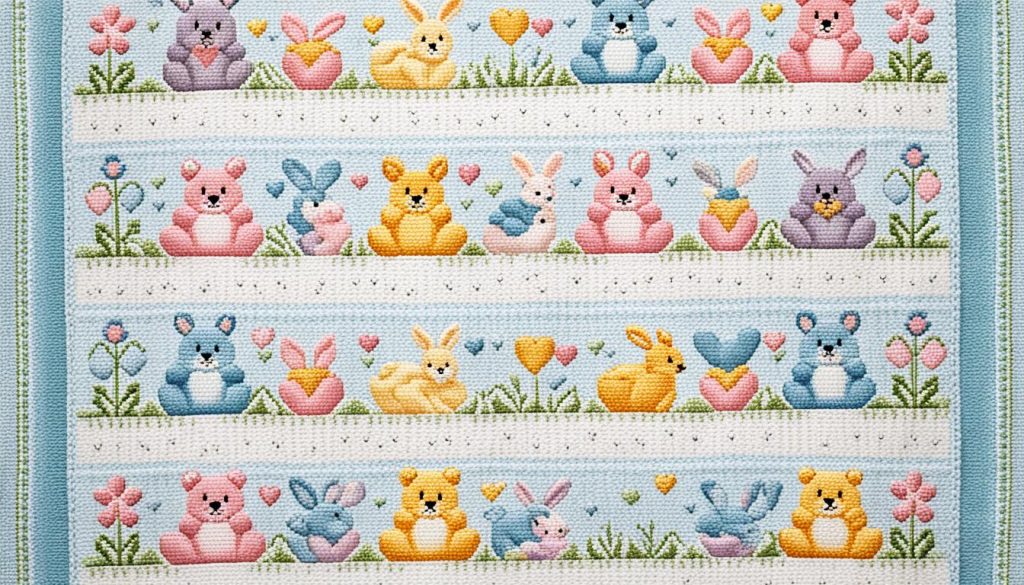
| Practical Application | Description |
|---|---|
| Cross Stitch Home Decor | Wall hangings, framed pieces, cushion covers |
| Cross Stitch Gifts | Bookmarks, handmade gifts, personalized presents |
| Cross Stitch Baby Patterns | Nursery decorations, gifts for new parents |
| Cross Stitch Wedding Patterns | Commemorative wedding gifts |
| Small Accessories | Pins, needle minders, coasters, glasses cloths |
Embroidery is also great for practical and decorative items, especially on clothing and accessories. Adding embroidery to jackets, shirts, or bags makes them stand out. Like cross stitch, embroidery lets you personalize items, turning them into keepsakes that tell your story.
Whether you prefer crossstitching or embroidery, both crafts let you add personal or traditional touches to textiles. You can turn everyday items into special pieces that reflect your culture, memories, and personal journey. As you explore these options, you bring your vision and authenticity to life, adding handmade magic to every stitch and thread.
Conclusion
Choosing between cross stitch and embroidery can seem hard, but each craft has its own special qualities. Cross stitch is great for those who like precise, grid-based designs. It’s similar to pixel art. Embroidery, however, offers more creative freedom with intricate techniques and various stitches.
Both crafts can be calming and fulfilling. Finishing a project can be very therapeutic. It’s not just the making that helps, but also connecting with others in crossstitching forums and communities.
Historically, counted cross-stitch has been around for centuries. It connects us to the past with its charts and patterns. Threads like DMC and Anchor, from the 1800s, keep this tradition alive.
Today, you can find patterns from traditional to modern in crossstitching online shops. There’s something for every taste. Cross stitching and embroidery are more than hobbies. They’re ways to express yourself and be mindful, needing detailed attention and creativity.
Your choice should match your preferences for complexity and the kind of art you want to make. Think about how you want to enjoy this rewarding hobby.
